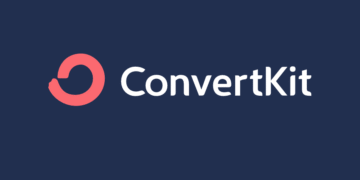Can a company truly thrive without prioritizing its role in society? This question challenges outdated notions that profit and purpose exist in separate realms. Today, businesses face mounting pressure to align their operations with societal needs—not just because it’s ethical, but because 87% of consumers actively choose brands that demonstrate genuine commitment to shared values.
The journey from early philanthropy to modern strategic initiatives reflects a seismic shift. Johnson & Johnson’s 1980s disaster relief programs set a precedent, but contemporary efforts now directly influence employee retention and investor confidence. Studies reveal organizations with robust social impact practices see 38% higher employee retention and stronger long-term financial performance.
Authentic engagement drives success. Millennials—the largest workforce demographic—prioritize employers whose values mirror their own. When teams contribute meaningfully to community-focused programs, they become ambassadors for both internal culture and external brand loyalty. This synergy transforms goodwill into measurable outcomes.
This guide explores actionable steps to build initiatives that resonate with stakeholders while advancing core objectives. We’ll examine how auditing current practices, setting transparent goals, and fostering partnerships create lasting change—proving that purpose and profit aren’t just compatible, but inseparable.
Key Takeaways
- Consumer preferences heavily favor brands with ethical commitments (87% prioritize social responsibility)
- Strategic initiatives boost employee retention by 38% and attract talent
- Modern programs integrate community impact with measurable business outcomes
- Transparency in implementation builds trust with investors and customers
- Successful frameworks require ongoing measurement and adaptation
Understanding the Foundation of Corporate Social Responsibility
Businesses once viewed community support as optional charity. Today, it’s a non-negotiable element of operational DNA. Early efforts like Johnson & Johnson’s 1980s disaster relief laid groundwork, but modern programs now drive measurable outcomes across industries.
The Evolution of CSR in Business
Philanthropy transformed into strategic action when studies revealed its financial upside. By 2023, 75% of employees aged 18-34 demanded employer activism on social issues. Firms like Google.org pioneered this shift, tying tech innovation to global education access.
This pivot reshaped stakeholder expectations. Investors now assess environmental and governance metrics alongside profits. Companies leading in ESG standards command 11% valuation premiums, proving ethics and economics coexist.
The Role of CSR in Modern Corporate Culture
Team unity strengthens when values align with action. Salesforce’s 1-1-1 model dedicates resources to community projects, boosting both morale and retention. Such frameworks turn employees into brand advocates.
Authentic engagement builds trust that spreads. Patagonia’s environmental commitments increased customer loyalty while reducing staff turnover by 50%. These outcomes prove purpose-driven cultures outperform competitors.
Defining Your Company’s Purpose and Values
Core values act as the compass guiding every impactful business decision. Organizations like Splunk transformed their operations by embedding initiatives such as “Data for Good” into their mission, proving that purpose-driven frameworks create ripples across teams and markets. When principles align with daily practices, they fuel initiatives that resonate with both employees and communities.
Aligning Organizational Culture with Social Impact
Authentic integration begins with leadership. Workshops that connect team roles to societal challenges turn abstract values into tangible action. Patagonia’s Earth-first ethos, for example, reduced turnover while increasing customer loyalty—68% of employees report higher job satisfaction when their work directly supports environmental goals.
Transparency bridges intention and execution. Regular town halls where staff co-design projects foster ownership. Google’s employee-driven sustainability task forces cut energy use by 40% company-wide, demonstrating how inclusive cultures amplify results.
Stakeholder feedback refines priorities. Annual impact assessments paired with real-time adjustment cycles ensure initiatives stay relevant. Salesforce’s iterative approach to community partnerships boosted volunteer participation by 200% in three years, proving adaptability drives lasting change.
Purpose isn’t static—it evolves through deliberate reflection. Companies that revisit their guiding principles quarterly maintain alignment with shifting societal needs, turning values into vehicles for measurable progress.
Conducting a CSR Audit and Listening Tour
What separates authentic social impact from superficial gestures? The answer lies in rigorous evaluation and inclusive dialogue. Organizations committed to meaningful progress begin by examining existing programs through dual lenses: operational effectiveness and community resonance.
Evaluating Current CSR Initiatives
Start with a granular review of active projects. Map each initiative against measurable outcomes like volunteer hours logged or carbon emissions reduced. Tech giant Microsoft uses real-time dashboards to track progress across 50+ sustainability metrics, enabling swift adjustments.
Engage cross-functional teams in discovery sessions. Sales departments often reveal customer expectations, while HR teams identify skill-based volunteering opportunities. This collaborative approach surfaces hidden synergies between business objectives and societal needs.
Integrating Stakeholder and Community Feedback
Launch listening channels that capture diverse perspectives. Retail leader Target conducts quarterly employee pulse surveys and partners with local nonprofits for joint needs assessments. These insights shape initiatives addressing food insecurity and workforce development simultaneously.
Prioritize transparency when sharing findings. Publish audit results internally and host community roundtables to discuss improvements. Outdoor retailer REI increased program participation by 120% after implementing stakeholder-suggested changes to their environmental grants process.
Continuous feedback loops transform static programs into dynamic solutions. When teams revisit goals biannually and adapt based on new data, they create lasting value for both the organization and its partners.
how to develop a corporate social responsibility (CSR) strategy
Forward-thinking organizations now treat societal contributions as performance accelerators. By connecting community-focused work with operational metrics, leaders unlock dual value streams that fuel growth and loyalty.
Mapping CSR Initiatives to Business Outcomes
Splunk’s “Data for Good” program demonstrates measurable alignment. Their tech donations to disaster response teams reduced employee turnover by 22% while boosting client retention. This approach transforms abstract goodwill into tracked KPIs like productivity gains and talent acquisition costs.
Three steps create tangible connections:
1. Identify overlapping priorities between community needs and operational strengths
2. Establish quarterly progress reviews with cross-department leaders
3. Publish impact reports linking volunteer hours to skill development metrics
Empowering Employee Engagement for Lasting Impact
Google.org’s innovation grants show how staff-driven initiatives amplify results. Their employee task forces propose funded projects, creating 83% higher participation rates than mandated programs. This ownership model turns teams into ambassadors for both internal culture and external brand reputation.
Effective empowerment tactics include:
– Skill-based volunteering matching IT staff with nonprofit tech upgrades
– Monthly “impact showcases” where teams present community outcomes
– Real-time feedback tools that shape initiative adjustments
When purpose becomes participatory, organizations see 40% faster adoption of new sustainability practices. This cultural shift makes social contributions inseparable from daily operations, proving that ethical commitments drive market leadership.
Implementing Effective CSR Programs and Communication
Execution separates visionary plans from tangible results. Successful initiatives emerge when organizations combine structured frameworks with inclusive dialogue, transforming blueprints into community-driven action.
Developing Actionable Initiatives
Start with a three-step framework: identify urgent community needs, align them with operational capabilities, and establish quarterly milestones. Microsoft’s skills-based volunteering program reduced onboarding time for new hires by 18% while addressing digital literacy gaps.
Prioritize initiatives offering dual value. Salesforce’s pro-bono consulting model improved client retention rates while upskilling 12,000 employees in cross-functional collaboration. This approach turns community work into professional development opportunities.
Effective Internal Communication Channels
Cut through organizational noise with targeted messaging. Slack channels dedicated to sustainability updates see 73% higher engagement than company-wide emails. Monthly town halls featuring frontline staff stories increase program participation by 40%.
Visual dashboards drive accountability. Patagonia’s real-time tracker displays volunteer hours alongside carbon reduction metrics, making progress tangible for all teams. Transparent reporting builds trust and sustains momentum.
Leveraging Technology to Enhance Participation
Modern platforms remove logistical barriers. Benevity’s grant-matching software boosted employee donations by 210% at Cisco through automated employer contributions. Mobile apps with gamified challenges increase volunteer sign-ups by 65%.
Leadership commitment fuels adoption. When executives actively use collaboration tools and share progress videos, teams report 55% faster initiative rollout. Allocated resources—like dedicated platform training hours—signal organizational priority.
Measuring Impact and Scaling CSR Efforts
What separates fleeting goodwill from lasting societal change? Rigorous measurement transforms well-intentioned programs into engines of progress. Leaders now treat data as the bridge between initial efforts and transformative scale.
Establishing Benchmarks and KPIs for Success
Patagonia sets the standard with blended metrics tracking energy use and staff sentiment. Their annual impact reports reveal how reduced water consumption correlates with 31% higher employee retention. ACCP research confirms companies using clear KPIs achieve 42% faster progress toward sustainability goals.
Effective measurement starts with three actions:
1. Align metrics with operational strengths and community priorities
2. Deploy tools like Sopact Impact Cloud for real-time analytics
3. Share results through interactive dashboards accessible to all teams
Iterative Improvement and Strategic Scaling
Microsoft’s adaptive approach demonstrates scalability. Their skills-based volunteering program expanded to 76 countries after quarterly reviews of participant feedback and business outcomes. Real-time adjustments increased community impact by 58% while cutting operational costs.
Carmen Perez’s work with Fortune 500 firms shows successful scaling requires:
– Monthly stakeholder input sessions
– Biannual initiative audits comparing results to benchmarks
– Leadership training on data-driven decision making
When progress becomes visible and adaptable, programs evolve from local experiments to global standards. This dynamic approach turns temporary projects into permanent value streams for businesses and communities alike.
Conclusion
In an era where purpose defines profit, businesses wield unprecedented power to shape societal progress. This guide outlined actionable steps to align operations with meaningful change: auditing current practices, setting transparent goals, and fostering collaborative partnerships. When companies embed social responsibility into their DNA, they unlock dual rewards—strengthened reputations and measurable operational gains.
Robust frameworks transform workplace cultures. Organizations prioritizing employee engagement in community programs see 38% higher retention rates, proving purpose-driven teams outperform competitors. Transparent reporting builds trust with investors while adaptive measurement ensures initiatives evolve with societal needs.
The path forward demands courage and consistency. Leaders who integrate ethical commitments into daily practices create ripple effects across communities and industries. Start today—revisit your core values, empower teams through participatory programs, and measure outcomes that matter.
Every decision shapes tomorrow’s legacy. Will your organization lead the charge toward equitable growth, or follow? The tools exist. The benefits are clear. Now’s the time to act.
FAQ
How does CSR create value beyond financial metrics?
CSR strengthens brand reputation, fosters employee loyalty, and builds trust with stakeholders. By addressing societal challenges like climate action or equity, businesses drive innovation while contributing to healthier communities and long-term resilience.
What steps ensure alignment between company culture and social impact goals?
Start by embedding purpose into leadership decisions and daily operations. Host workshops to co-create initiatives with teams, and recognize employees who champion ethical practices. Transparency in reporting progress reinforces accountability across all levels.
Why prioritize stakeholder feedback when auditing existing initiatives?
Communities and partners offer insights into unmet needs and unintended consequences. Listening tours reveal gaps in current efforts while building collaborative relationships—turning beneficiaries into active participants in solution design.
Can employee volunteer programs drive measurable business outcomes?
Yes. Skills-based volunteering boosts team morale and develops leadership capabilities. Tracking hours served or pro bono projects ties participation to talent retention and skill-building metrics, creating dual value for staff and society.
What communication tools effectively rally teams around shared purpose?
Use internal platforms like Slack or Microsoft Teams for real-time updates. Host town halls featuring impact stories, and share dashboards visualizing progress toward goals. Gamification elements—like milestone badges—encourage friendly competition.
How do KPIs transform well-intentioned efforts into scalable solutions?
Metrics like carbon reduction percentages or volunteer participation rates quantify progress. Regular impact assessments identify high-performing initiatives, allowing leaders to allocate resources strategically and replicate success across regions or departments.







